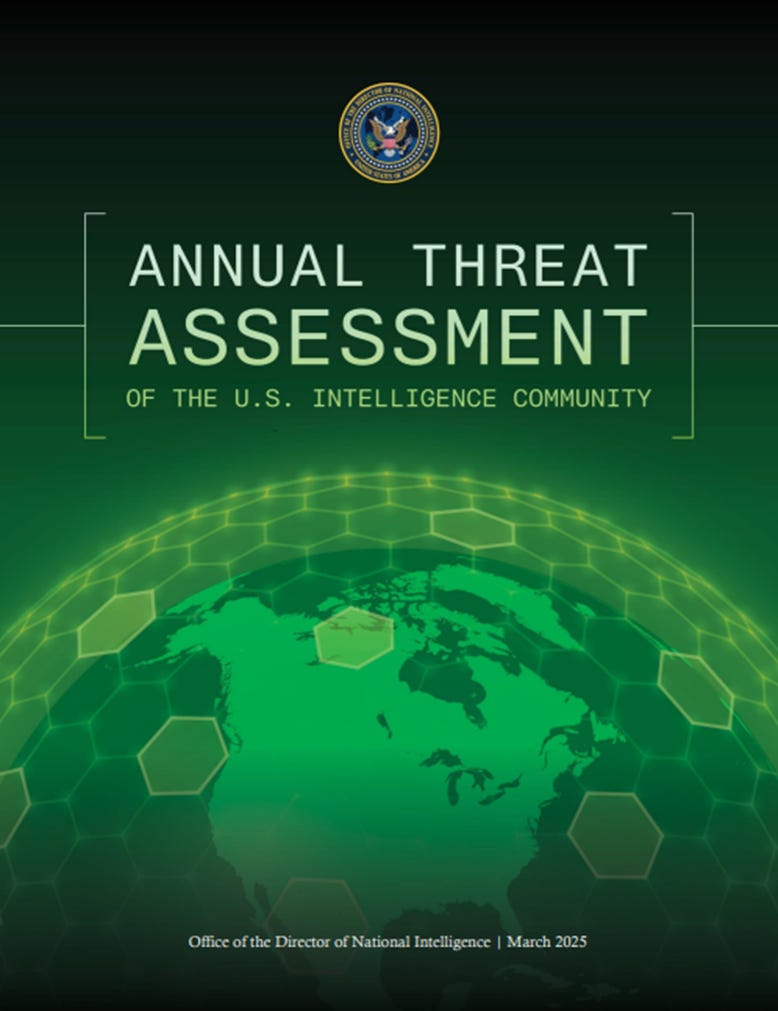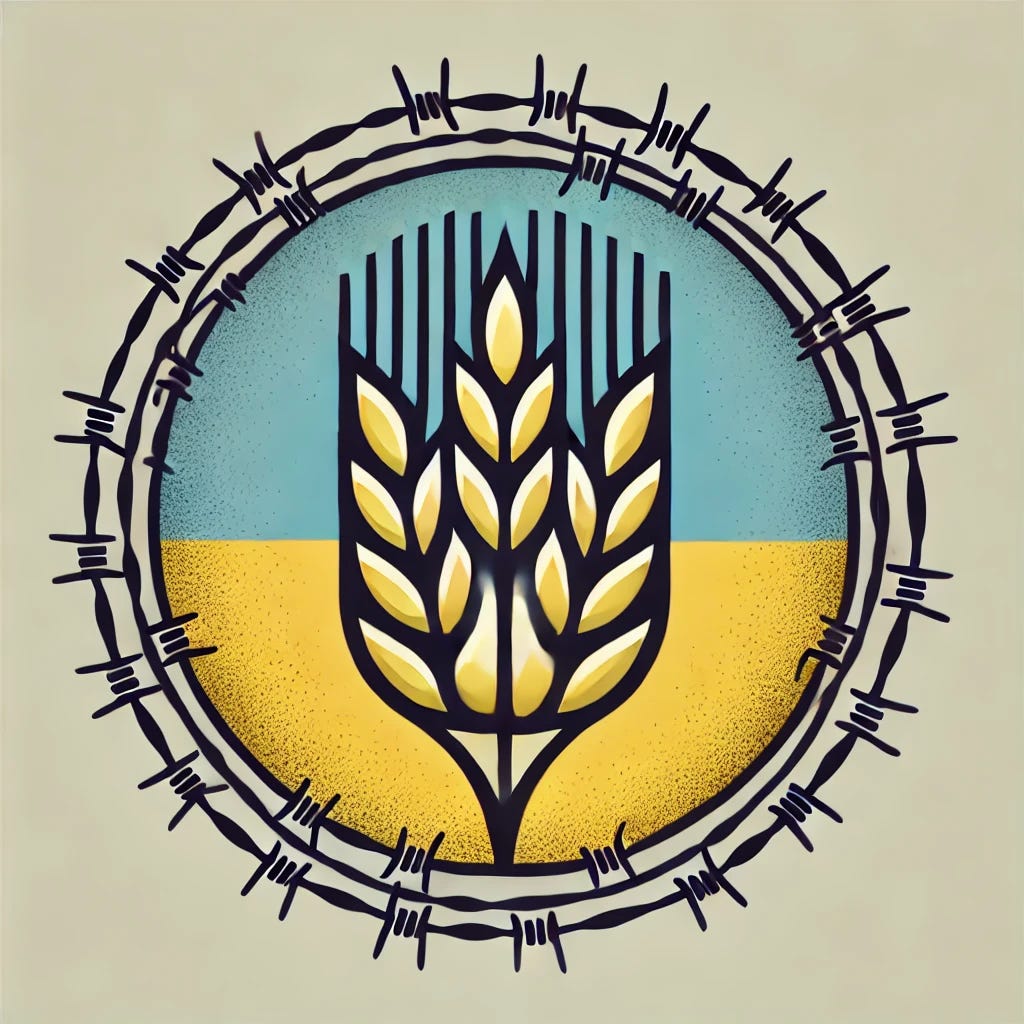Analysis of the Russia-Specific Content in the U.S. Annual Threat Assessment
by Benjamin Cook
The US’ Annual Threat Assessment (ATA) is presented to the public as a neutral intelligence document designed to inform policymakers. In reality, it is a political document that informs intelligence and guides narratives rather than an intelligence document that purely informs policy. These assessments are tools of influence, often shaping public discourse and policy direction through the selective framing of intelligence findings. That said, the ATA is not without merit; it serves as a useful chronicle of our adversaries’ capabilities, intentions, and strategic developments. By aggregating and organizing complex information, it gives readers a snapshot of the global security environment, albeit through a politically tinted lens.
The 2025 ATA underscores Russia’s central role in shaping the current and future security environment, particularly through its war in Ukraine. Russia’s military engagement in Ukraine, which the Kremlin frames as a proxy conflict with the West, has become a defining struggle for both Russian strength and President Vladimir Putin’s legacy. Despite immense costs in blood and resources, Moscow remains resilient, bolstered by support from China, Iran, and North Korea. Russia’s strategic objectives revolve around restoring its influence over its near abroad and countering what it perceives as encroachment by the United States and its allies.
The war in Ukraine has become a grinding conflict of attrition that plays to Russia’s advantages in manpower, artillery production, and defense-industrial capacity. Russia has sustained heavy personnel losses—estimated at over 750,000 dead and wounded—yet continues to replenish its ranks and field new units. Russia’s capacity to manufacture artillery shells, long-range missiles, and unmanned aerial vehicles (UAVs) remains robust, ensuring a steady firepower advantage over Ukraine. While Ukraine has attempted offensives, such as in Kursk, and passed new mobilization laws to increase its manpower, Kyiv faces difficulties defending on multiple fronts while expanding its operational capacity.
Moscow’s rising defense spending has reached unprecedented levels under Putin, allowing the Kremlin to mitigate the impacts of Western sanctions and to continue large-scale procurement efforts. Russia’s relationship with China has been instrumental in circumventing sanctions, with Beijing supplying dual-use materials that have bolstered Russia’s defense-industrial complex. Similarly, Iran and North Korea have provided munitions and UAVs, enabling Russia to sustain its war effort and maintain battlefield momentum.
The conflict has also served as a real-world laboratory for Russian military innovation. Initially lacking in electronic warfare (EW) and drone capabilities, Russia has adapted swiftly, developing sophisticated counter-drone equipment and advanced EW systems that interfere with Ukrainian GPS and radar. Russia’s air and naval forces remain largely intact and modern, with strategic assets like submarines and bombers equipped with land-attack cruise missiles capable of threatening U.S. territory.
Putin’s calculus remains one of strategic patience. While unable to achieve the total victory envisioned in February 2022, Russia’s slow, steady gains erode Ukraine’s battlefield position. Both Putin and Ukrainian President Volodymyr Zelenskyy have expressed interest in dialogue, but neither side is willing to accept terms perceived as unsatisfactory. Putin’s confidence in Russia’s resilience and Ukraine’s faltering Western support allows him to prolong the conflict, banking on eventual concessions.
Hate Subscriptions? Me too! You can support me with a one time contribution to my research at Buy Me a Coffee. https://buymeacoffee.com/researchukraine
However, the assessment’s claim that “the grinding war of attrition will lead to a gradual but steady erosion of Kyiv’s position on the battlefield, regardless of any U.S. or allied attempts to impose new and greater costs on Moscow” is an overt political insertion rather than a fact-based intelligence conclusion. This statement directly implies that further U.S. military aid is futile, aligning with political narratives that support scaling back U.S. involvement—a position consistent with Trump-aligned foreign policy sentiments rather than the realities on the ground, where Ukraine continues to adapt and fight effectively with Western support.
Russia’s cyber capabilities are another critical aspect of its war effort and broader threat posture. Moscow has repeatedly demonstrated its ability to integrate cyber attacks with kinetic military action, targeting Ukrainian infrastructure with disruptive malware and pre-positioning access on U.S. critical infrastructure for potential use in future conflicts. Russia’s malign influence campaigns aim to erode Western democratic institutions, sow political discord, and degrade support for Ukraine.
Russia’s space capabilities, although hampered by sanctions and resource competition, continue to pose a threat through the development of antisatellite (ASAT) weapons and jamming systems. Notably, Russia is reportedly developing a satellite capable of carrying a nuclear payload as an antisatellite device, which could have catastrophic global implications.
Beyond the immediate battlefield, Russia’s geopolitical maneuvering is reshaping global alliances. The Kremlin’s alignment with China, Iran, and North Korea underscores a growing bloc of adversarial cooperation aimed at countering U.S. influence. This cooperation extends to arms trade, energy exports, and diplomatic support in non-Western forums like BRICS.
Russia’s control of Arctic territory and its interest in Greenland, driven by strategic naval routes and resource exploitation, further enhance its global reach. However, the war in Ukraine has strained these ambitions, leading Moscow to increasingly rely on China in Arctic ventures.
This document is not just an intelligence assessment; it is fundamentally a political document. It includes subtle but clear attempts to shape policy rather than merely inform it. The explicit conclusion that more U.S. support to Ukraine is unlikely to change outcomes is a political message aimed at reinforcing domestic debate and partisan agendas. It's not just a Trump administration tactic, the Biden administration’s 2021 ATA mentioning gender and race as domestic threats serves as another example of how these assessments are leveraged to reflect political priorities rather than objective analysis.
In reality, all Annual Threat Assessments are exercises in narrative-setting—a case of the tail wagging the dog—meant to influence public perception and policy direction as much as they are designed to provide raw intelligence assessments. They provide value by chronicling capabilities and offering a global snapshot, but readers should approach them with a critical eye toward political bias.
Benjamin Cook continues to travel to, often lives in, and works in Ukraine, a connection spanning more than 14 years. He holds an MA in International Security and Conflict Studies from Dublin City University and has consulted with journalists on AI in drones, U.S. military technology, and related topics. He is co-founder of the nonprofit UAO, working in southern Ukraine. You can find Mr. Cook between Odesa, Ukraine; Charleston, South Carolina; and Tucson, Arizona.
Hate Subscriptions? Me too! You can support me with a one time contribution to my research at Buy Me a Coffee. https://buymeacoffee.com/researchukraine
Mr. Cook’s Substack:






I would expect that a "real" National Intelligence based threat assessment to be a classified document that is not releaseable to the general public. I would be curious to learn what the actual intelligence analyses, without political language, on the Ukraine War would conclude. I would not expect that such a real assessment concludes that military and economic aid to Ukraine would not alter the outcome of the war into Ukraine's favor.
“the grinding war of attrition will lead to a gradual but steady erosion of Kyiv’s position on the battlefield, regardless of any U.S. or allied attempts to impose new and greater costs on Moscow” is an overt political insertion rather than a fact-based intelligence conclusion.
I cannot agree with that. Ludicrous. It challenges the fundamental military strategy of Russia, denies it has merit, any effect.
'overt political insertion'. I think not.
However this:
"Russia’s malign influence campaigns aim to erode Western democratic institutions, sow political discord, and degrade support for Ukraine"
clearly is.